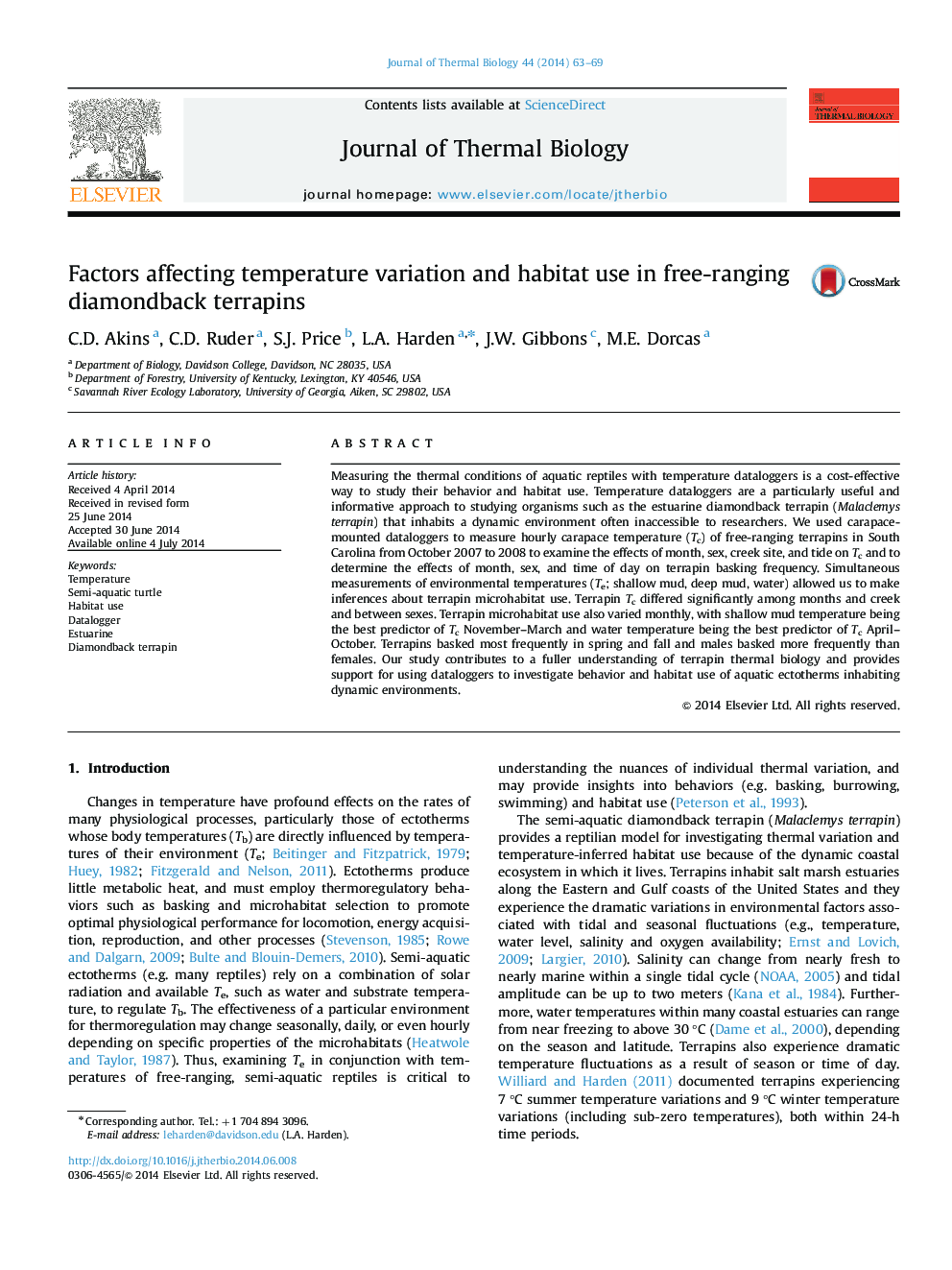| Article ID | Journal | Published Year | Pages | File Type |
|---|---|---|---|---|
| 2842909 | Journal of Thermal Biology | 2014 | 7 Pages |
•Diamondback terrapin habitat use and activity inferred using temperature dataloggers.•Terrapins used shallow mud habitat in winter and tidal creeks in spring and fall.•Terrapins basked more in spring and fall; males basked more than females.•Temperature dataloggers are valuable for measuring ectotherm habitat use and activity.
Measuring the thermal conditions of aquatic reptiles with temperature dataloggers is a cost-effective way to study their behavior and habitat use. Temperature dataloggers are a particularly useful and informative approach to studying organisms such as the estuarine diamondback terrapin (Malaclemys terrapin) that inhabits a dynamic environment often inaccessible to researchers. We used carapace-mounted dataloggers to measure hourly carapace temperature (Tc) of free-ranging terrapins in South Carolina from October 2007 to 2008 to examine the effects of month, sex, creek site, and tide on Tc and to determine the effects of month, sex, and time of day on terrapin basking frequency. Simultaneous measurements of environmental temperatures (Te; shallow mud, deep mud, water) allowed us to make inferences about terrapin microhabitat use. Terrapin Tc differed significantly among months and creek and between sexes. Terrapin microhabitat use also varied monthly, with shallow mud temperature being the best predictor of Tc November–March and water temperature being the best predictor of Tc April–October. Terrapins basked most frequently in spring and fall and males basked more frequently than females. Our study contributes to a fuller understanding of terrapin thermal biology and provides support for using dataloggers to investigate behavior and habitat use of aquatic ectotherms inhabiting dynamic environments.
